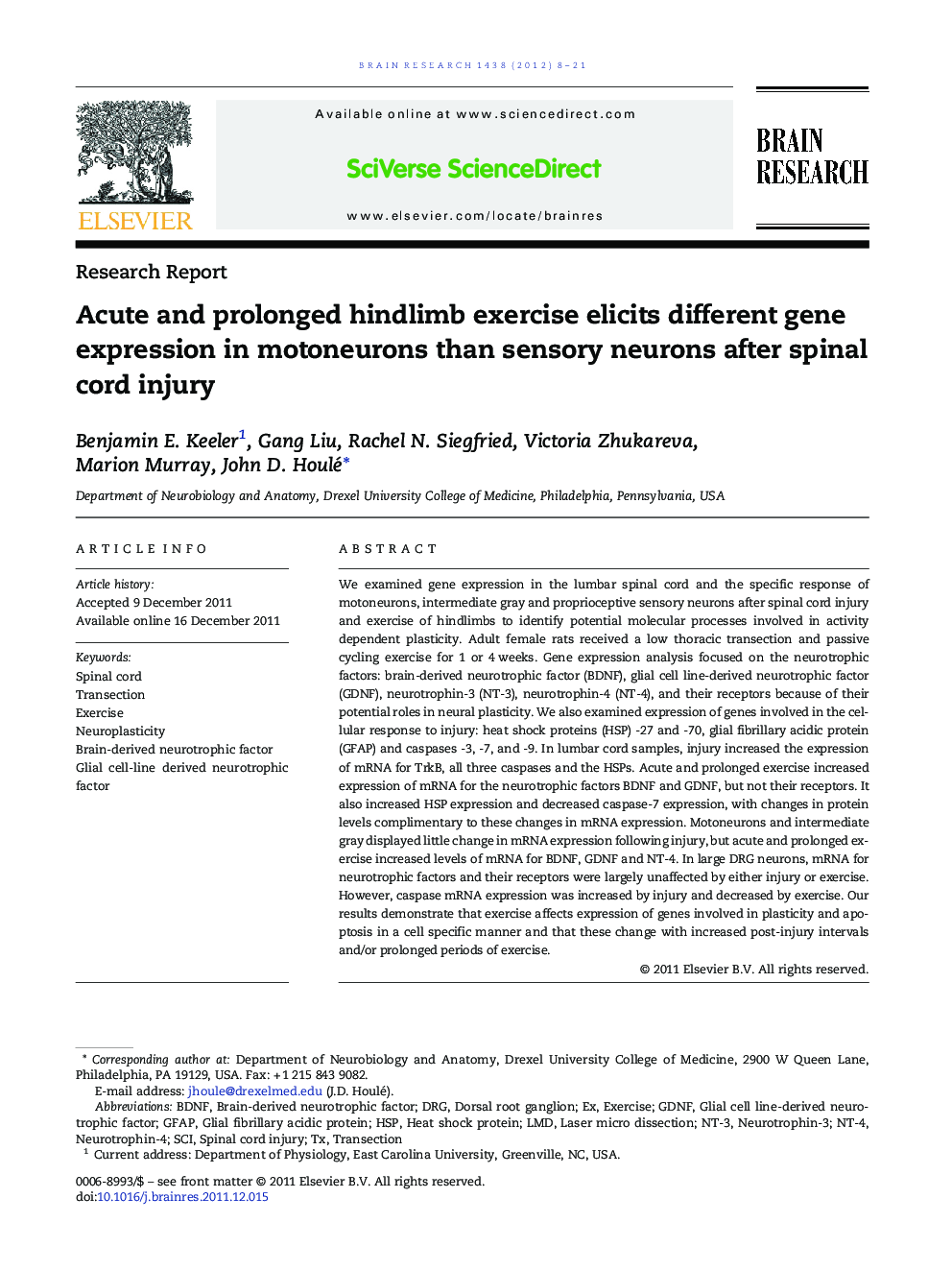| کد مقاله | کد نشریه | سال انتشار | مقاله انگلیسی | نسخه تمام متن |
|---|---|---|---|---|
| 6264569 | 1614001 | 2012 | 14 صفحه PDF | دانلود رایگان |

We examined gene expression in the lumbar spinal cord and the specific response of motoneurons, intermediate gray and proprioceptive sensory neurons after spinal cord injury and exercise of hindlimbs to identify potential molecular processes involved in activity dependent plasticity. Adult female rats received a low thoracic transection and passive cycling exercise for 1 or 4Â weeks. Gene expression analysis focused on the neurotrophic factors: brain-derived neurotrophic factor (BDNF), glial cell line-derived neurotrophic factor (GDNF), neurotrophin-3 (NT-3), neurotrophin-4 (NT-4), and their receptors because of their potential roles in neural plasticity. We also examined expression of genes involved in the cellular response to injury: heat shock proteins (HSP) -27 and -70, glial fibrillary acidic protein (GFAP) and caspases -3, -7, and -9. In lumbar cord samples, injury increased the expression of mRNA for TrkB, all three caspases and the HSPs. Acute and prolonged exercise increased expression of mRNA for the neurotrophic factors BDNF and GDNF, but not their receptors. It also increased HSP expression and decreased caspase-7 expression, with changes in protein levels complimentary to these changes in mRNA expression. Motoneurons and intermediate gray displayed little change in mRNA expression following injury, but acute and prolonged exercise increased levels of mRNA for BDNF, GDNF and NT-4. In large DRG neurons, mRNA for neurotrophic factors and their receptors were largely unaffected by either injury or exercise. However, caspase mRNA expression was increased by injury and decreased by exercise. Our results demonstrate that exercise affects expression of genes involved in plasticity and apoptosis in a cell specific manner and that these change with increased post-injury intervals and/or prolonged periods of exercise.
⺠Motor and sensory neurons displayed distinct responses to injury and exercise. ⺠Transection injury increased lumbar expression of TrkB, caspases, and HSPs. ⺠Exercise increased motoneuron expression of neurotrophic factors. ⺠Neurotrophic factor expression was unaffected by exercise in large DRG neurons. ⺠Acute exercise decreased caspase expression in motoneurons and large DRG neurons.
Journal: Brain Research - Volume 1438, 15 February 2012, Pages 8-21